TS
letnan.bejo
(tembang kenangan) F-20 Tigershark, The best fighter never bought?

When test pilot Russ Scott took off from Edwards Air Force Base, Calif. on Aug. 30, 1982, he was making the maiden flight of a sleek and beautiful fighter, the Northrop F-20A Tigershark.
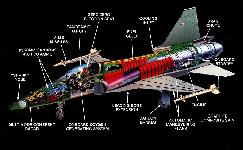
With a General Electric F404-GE-100 turbofan engine rated at 17,000 pounds of thrust, the F-20A was 40 percent more powerful than the twin-engined F-5E Tiger II that preceded it. Northrop said the F-20A would have a low price tag, operate from short runways, and outfight the Soviet Union’s best.
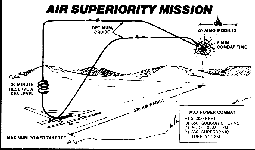
Today, veterans of the Pentagon‘s “lightweight fighter Mafia” say the Tigershark could have been the fighter they wanted, but wasn’t. Like other American fighters, the F-20A eventually became too big and too complex, the Mafia members argued.
The reformers included Air Force Col. John Boyd (1927-1997), Col. Everest E. Riccioni, and Pentagon analyst Pierre Sprey. “We wanted hot, light airplanes that were just as stripped-down as possible,” said Sprey.

A F-20 Tigershark, the first F-20 built, takes off in Northrop colors with an F-5F chase plane. U.S. Air Force photo
The Tigershark was initially called the F-5G. The Carter administration had initiated a Department of Defense (DOD) project called “FX”, intended to sell less-advanced fighter designs to U.S. allies to limit the possibility of front-line U.S. technology falling Soviet hands, and Northrop initially saw Taiwan as the most likely prospect for the new aircraft. Taiwan already operated F-5s. General Dynamics, then the builder of the F-16, which was being introduced into U.S. Air Force service, was developing the more austere F-16/79, using the J79 engine, for the FX program.

Northrop’s design team, under Welko E. Gasich, was divided on how to improve on the F-5 design. Some engineers wanted to retain two engines, in part to avoid aerodynamic re-shaping of the new fuselage.
Northrop hired retired Air Force Col. Everest “Rich” Riccioni to help select the best design. Riccioni applied his mentor Boyd’s concept of “energy maneuver,” to the new fighter. He helped Northrop choose a design by engineer Robert Sandusky in preference to others by Walt Sellers, John Patierno and Lee Begin. Sandusky’s sleek design incorporated the “wasp waist” of engineer Richard T. Whitcomb’s transonic area rule, and was soon redesignated F-20A.

Even while it was wooing Taiwan and South Korea, Northrop received an order from tiny but densely populated Bahrain for four Tigersharks.
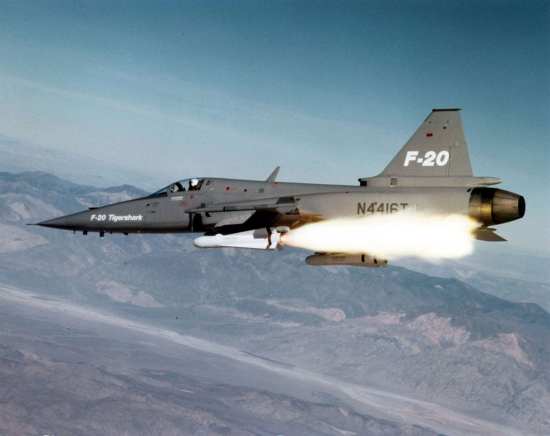
A F-20 Tigershark fires an AGM-65 Maverick air-to-surface tactical missile. U.S. Air Force photo
While just a single F-20A was flying, Darrell Cornell, Northrop’s chief experimental test pilot, took over most cockpit duties. Paul Metz, hired by Northrop in 1980, became the third F-20A pilot.
Cornell made the first flight of the second F-20A at Edwards on Aug. 26, 1983. The second Tigershark introduced General Electric AN/APG-67 radar, a head-up display, and a lengthened and bulged canopy.
Northrop hired retired Brig. Gen. (later, retired Maj. Gen.) Charles E. “Chuck” Yeager as a public relations spokesman for the Tigershark. Yeager, then 61, made two flights in the aircraft.

Northrop believed its product was superior to the General Dynamics F-16A Fighting Falcon. Both began as no-frills lightweight fighters and gradually became heavier and more complex. The F-20A was a better point-defense interceptor, but for most missions the two were comparable. And the F-20 was less expensive.
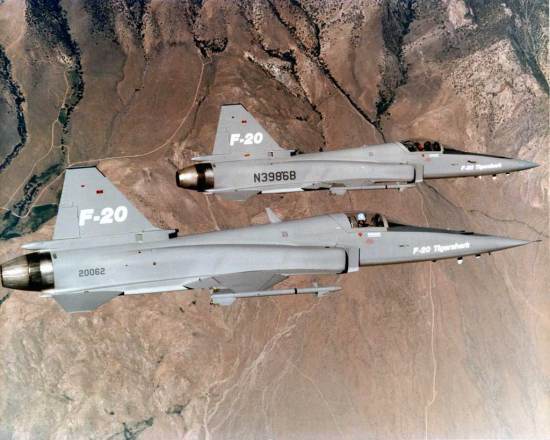
The third F-20A Tigershark made its initial flight on May 12, 1984, apparently at Edwards with Cornell at the controls.

With the election of Ronald Reagan as president, the FX program gradually fell out of favor as the administration relaxed export restrictions. Then the 1982 signing of the U.S.-PRC Joint Communiqué on arms sales blocked sale of the F-20 to Taiwan. Worse for the F-20’s chance in other markets, the Air Force had an iron in the fire with regard to foreign military sales (FMS), as every F-16 sold to a foreign country meant the overall production cost of the Air Force’s own F-16s would go down.
With Taiwan now starting their own indigenous light fighter project, a grand tour of Korea was planned for the Tigershark. On Oct. 10, 1984, test pilot Darrell Cornell demonstrated the first F-20A in a high-speed, low-altitude flyover at Korea’s Suwon airfield. Cornell threw his F-20A into a climbing roll with flaps and landing gear extended, when the aircraft stalled and crashed. Cornell was thrown clear and killed instantly.

An investigation cleared the F-20A of any design or mechanical flaw. It was found that Cornell had blacked out due to excessive Gs pulled in the acrobatic demonstration routine. The phenomenon of gravity-induced loss of consciousness (G-LOC) was then receiving widespread attention.
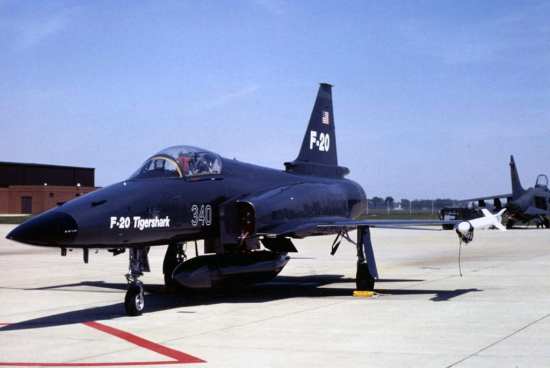
A F-20 Tigershark sporting an aggressor paint scheme. The F-20 was ultimately not selected by the U.S. Navy for adversary duties. U.S. Air Force photo
Five months later, on May 14, 1985, Tigershark No. 2 crashed at Goose Bay, Labrador. Pilot David Barnes (1934-1985), was killed. The Canadian accident report called G-LOC the cause of the crash.
Just months later, in January 1985 the U. S. Navy picked the F-16N rather than the F-20A for adversary duties. Northrop had placed high hopes on a Navy order and now had nowhere to turn. A fourth F-20A was never completed.
In a last-ditch effort on April 3, 1985, Northrop offered the U. S. Air Force 396 F-20As at an impossibly low $15 million each, against $18 million for an F-16. It was too late. The Air Force had no requirement.
The F-20A Tigershark was fast, maneuverable, lethal, easy to fly and easy to maintain. But Northrop was never truly able to compete with the F-16 on cost and the Tigershark failed, ultimately, because it tried to be too many things. Too heavy to be a lightweight, lacking the stealth properties then being developed in supersecret “black” programs, the F-20A was also too light to be a robust, globe-girdling warplane like the F-15E Strike Eagle. It was an outstanding fighter, but in the end the Northrop F-20A Tigershark was the right aircraft at the wrong time
http://www.defensemedianetwork.com/s...20-tigershark/
+++++++++++++++++++++++++++++++++++++++++++++++++++++++++++++++++++++++++++++++++++
GD-53 (APG-67) Golden Dragon
The AN/APG-67(V) multimode radar is a relatively lightweight and short-range system that fits into a small volume. Despite its merits, the APG-67 series has been unsuccessful in F-5A/E refit competitions. Only a derivative of the APG-67(C), which shares 90% commonality with the -67 (F), met with success, being developed for the Taiwanese Ching Kuo Indigenous Defense Fighter (IDF) as the GD-53 Golden Dragon.
The APG-67 is a coherent pulse-Doppler system that uses a flat-plate, vertically polarized, slotted array antenna on a direct-drive, two-axis balanced-gimbal mount. The transmitter has variable output power, pulse widths, and Pulse Repetition Frequencies (PRF).
The radar data computer contains two MIL-STD-1750A central processing units that can execute 256-point Fast Fourier Transform (FFT) coherent integration. It can be integrated into an avionics system through an MIL-STD-1553B digital databus interface and has Built-in Test (BIT) capability.
Air-to-air modes include Range-While-
Search (RWS), Velocity Search (VS), Adaptive Search Mode (ASM), air-combat (four submodes) Single-Target-Track (STT), Situational Awareness
Mode (SAM), and Track-While-Scan (TWS).
Air-to-ground modes include Real-Beam Ground Mapping (RBGM), Dop-pler Beam Sharpening (DBS), and surface moving target indication.
Development of the APG-67 began in the late 1970s for the Northrop F-20 Tigershark (formerly F-5G) aircraft, using technology derived from the Modular Survivable Radar (MSR) program. After the F-20′s cancellation, GE developed the APG-67 (E)
and (F) for retrofit to non-US F-5 Freedom Fighter/Tiger aircraft. The only production version, however, is the GD-53 fitted in Taiwan’s IDF.
BAND I/J
PEAKPOWER -67(E)/(F) 3.5 kW TRANSMIT POWER -67 (V) 200 watts; -67(E)/(F) 160 watts
RANGE, APG-67 (F)
RWS, look-up: 27-31 nm (31.1-35.7 mi;50-57.4km)
RWS, look-down: 17-21 nm (19.624.2 mi; 31.5-39.9 km) Air Combat: 10 nm (11.5 mi; 18.5
km)
SMTI, patrol craft, sea state 4: 26 nm (29.9 mi; 48.2 km); tank 19 nm (21.9 mi; 35.2 km) WEIGHT, -67(F) 189 Ib (86 kg) SYSTEM VOLUME 2.1 ft3 (0.060 m3)
ANTENNA SIZE, -67(F)
height 11 in (279 mm)
width 17 in (432 mm)
http://what-when-how.com/military-we...itary-weapons/
=====================================================================================
dulu kita disinyalir mau barang ini begitu juga dengan india(juga tertarik dengan saab vigen) namun kedekatan ispektur vinjay dengan Soviet saat itu membuat amerika tidak memberikan ijin.
akhirnya teknologinya dicomot untuk pengembangan pesawat tempur taiwan
0
11K
39
Thread Digembok
Urutan
Terbaru
Terlama
Thread Digembok
Komunitas Pilihan